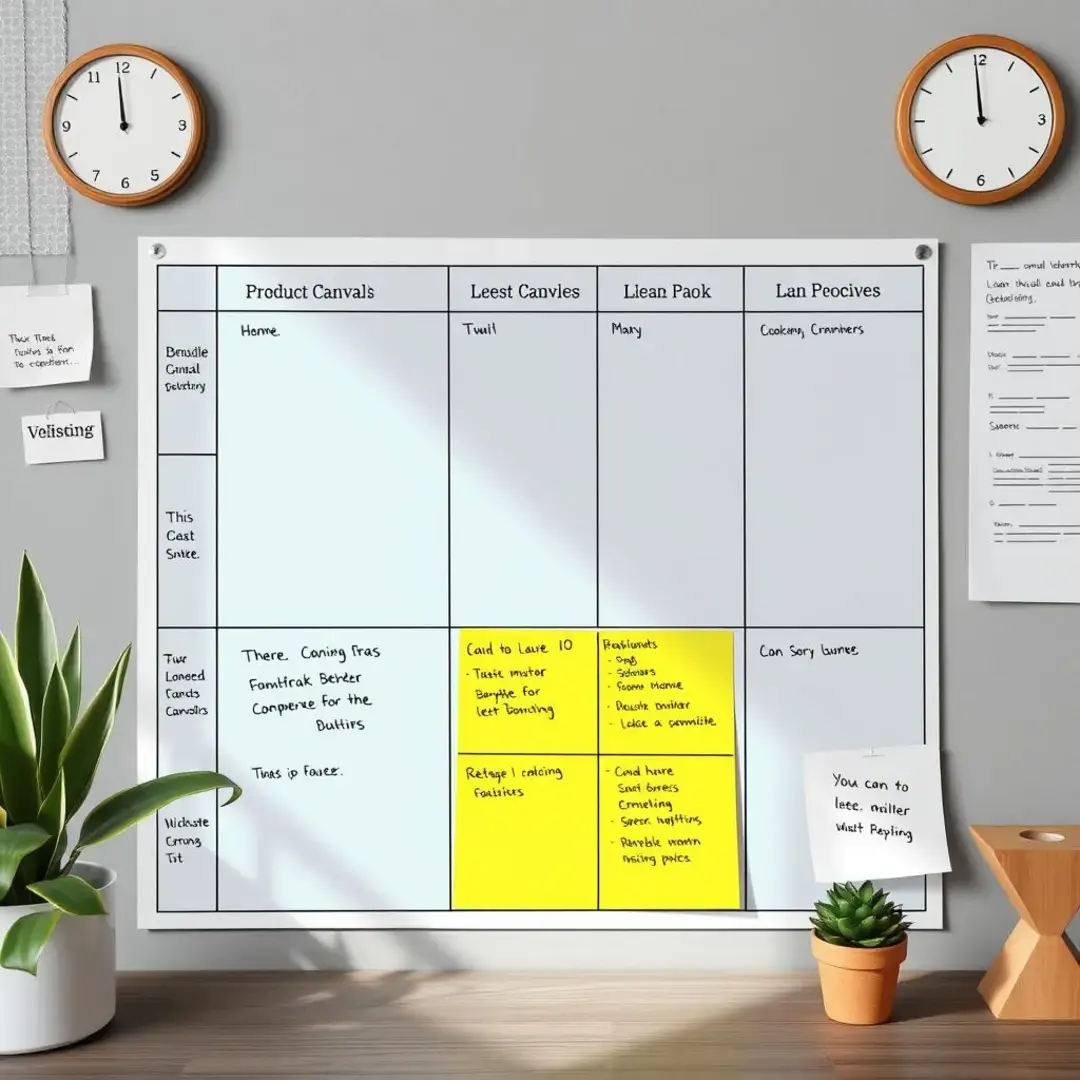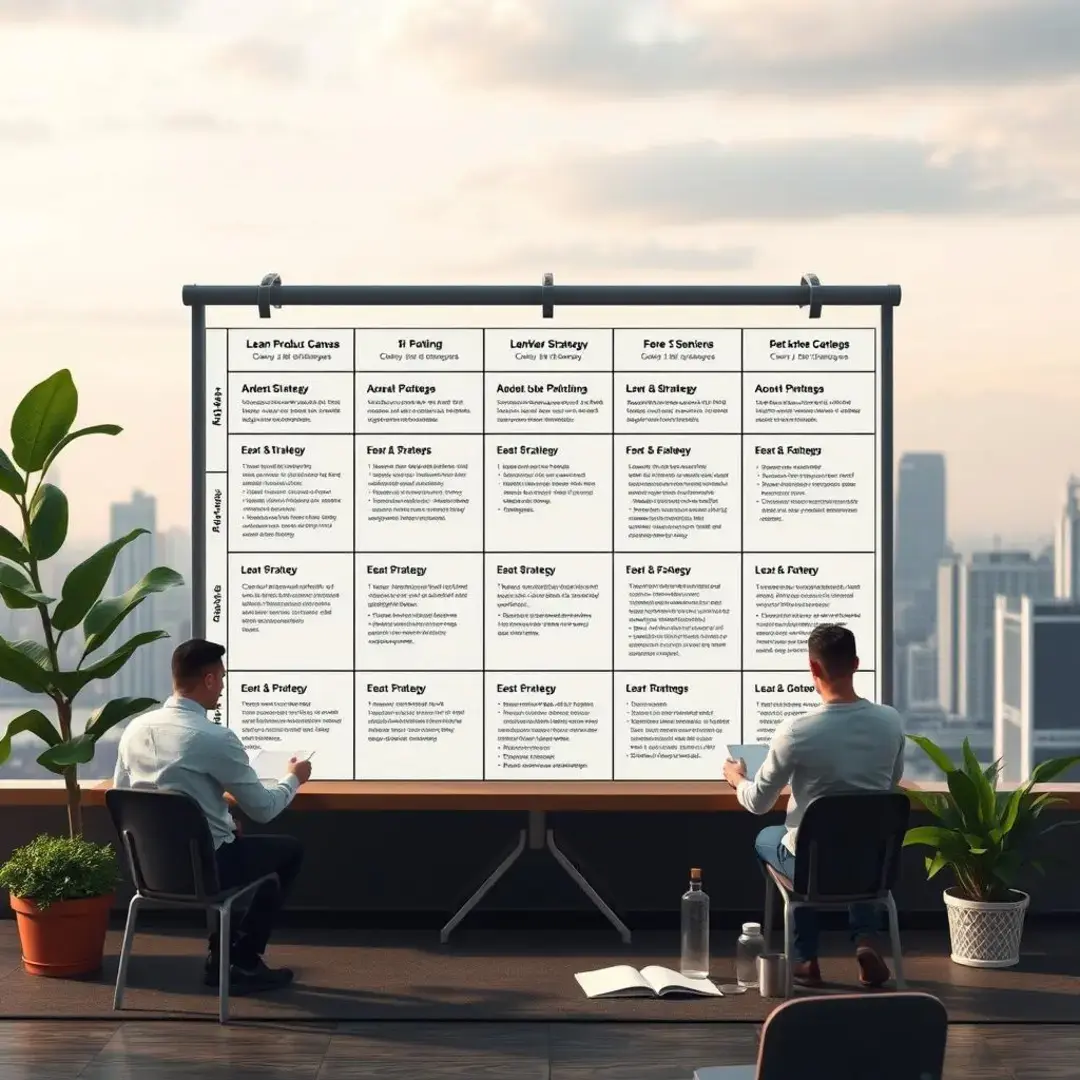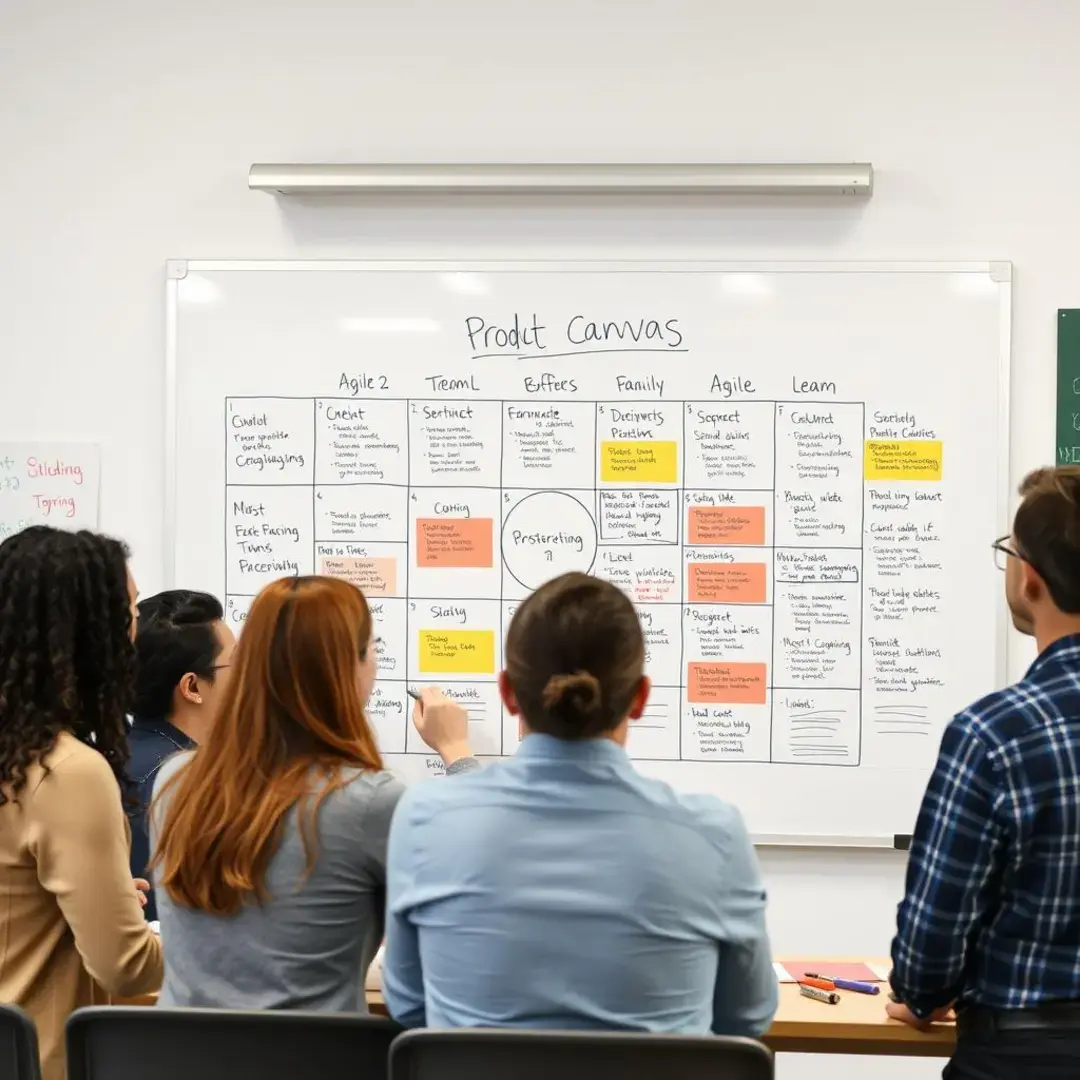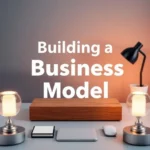Lean Product Canvas: The Agile Development Guide
Understanding the Lean Product Canvas for Advanced Users

Key Components of the Canvas Revisited
At the core of the Lean Product Canvas is a clear articulation of the problem your product aims to solve. This involves not only defining the issue but also understanding who is affected by it. By identifying your target audience, you can tailor your solution to meet their specific needs and pain points. Engaging with real users to gather feedback during this phase can lead to rich insights that refine your approach.
Next, articulating your solution involves detailing how it addresses the identified problem effectively. This part of the canvas demands that you define your Unique Value Proposition (UVP)—what sets your product apart from the competition. A compelling UVP not only captures the interest of potential customers but also provides a clear reason for them to choose your offering over alternatives. This emphasizes the product’s relevance in a crowded market and helps in communicating its benefits succinctly.
The Lean Product Canvas also emphasizes the need for key metrics. These indicators will allow you to assess the success of your product effectively. Whether it’s user engagement rates, conversion statistics, or customer satisfaction scores, it’s crucial to choose metrics that align with your business goals. By monitoring these metrics regularly, you can pivot your strategy if necessary, ensuring that your product continues to meet market demands.
Understanding how to reach your customers and maintain robust relationships is paramount. The canvas allows you to explore various channels for connecting with your audience, whether through social media, email marketing, or direct outreach. Establishing a solid customer relationship strategy is equally important, ensuring long-term engagement and loyalty. Striking a balance between outreach and relationship management can foster not just sales, but also community building around your brand.
Advanced Strategies for Canvas Utilization
For those already familiar with Agile methodologies, integrating the Lean Product Canvas into your sprint process can enhance efficiency and focus. This approach allows teams to revisit their canvas regularly, aligning product development efforts with user feedback and insights gained during each sprint. By treating the canvas as a living document, teams can adapt quickly, ensuring that their product continuously evolves in response to real-world use and feedback.
In more intricate product development scenarios, the Lean Product Canvas serves as a helpful guide to structure thinking and discussions. Whether you’re launching a new tech platform or creating a multifaceted service, the canvas can help teams break down the complexities into manageable components. This simplifies collaborative brainstorming sessions and keeps everyone focused on the ultimate goals amidst the intricacies of modern product development.
Not all projects are created equal—therefore, you must adapt your use of the Lean Product Canvas based on the scale of the project. For smaller projects, you could consolidate sections, while larger initiatives may require detailed exploration of each component. This adaptability ensures that teams at any scale can utilize the canvas effectively, thereby enhancing strategy formulation and execution regardless of project size.
Leveraging the Canvas for Strategic Decision-Making

Prioritization and Resource Allocation
When using the Lean Product Canvas, one of the most significant challenges is prioritizing which features to develop first. A common approach is to identify core features that align closely with customer pain points and your UVP. By focusing on these elements, teams can maximize impact while minimizing wasted resources—an essential aspect of the lean methodology. This focus ultimately leads to improved user satisfaction and retention.
While innovation is crucial in product development, it must be balanced against practical limitations such as time, budget, and team capacity. The Lean Product Canvas can help teams visualize these constraints, facilitating informed decision-making that prioritizes actionable ideas over lofty aspirations. By anchoring discussions in reality, teams can foster a culture that encourages smart risk-taking without losing sight of operational realities.
Validating Assumptions and Mitigating Risks
One of the critical aspects of the Lean Product Canvas is its emphasis on validating hypotheses through user feedback. Regular testing of your assumptions ensures that you’re not moving forward on flawed ideas. By gathering continuous feedback from real users, teams can make informed adjustments that refine both the product and the overall strategy. This process helps reduce the risk of developing products that may not resonate with users.
The market landscape is constantly evolving, and your product strategy must adapt in tandem. Using the Lean Product Canvas as an iterative tool allows teams to adjust their approach based on ongoing market analysis and user needs. Regularly revisiting and updating the canvas ensures that the product remains relevant, addressing shifting priorities and emerging trends as they occur.
Beyond the Basics: Advanced Techniques and Integrations

Integrating the Canvas with Other Agile Frameworks
For teams already utilizing frameworks like Scrum or Kanban, integrating the Lean Product Canvas can significantly enhance workflow efficiency. By mapping canvas components to existing sprint backlogs or Kanban boards, teams can maintain alignment between strategy and execution. This integration can streamline processes and improve communication, resulting in a more cohesive development environment.
In today’s fast-paced digital landscape, connecting your Lean Product Canvas to continuous delivery pipelines is increasingly essential. By automating deployments and aligning them with canvas insights, your team can rapidly iterate and deliver value. This strategic integration can help maintain a competitive edge, ensuring that innovations reach the market promptly and in sync with user demands.
Advanced Visualization and Collaboration Techniques
In an era of remote work, leveraging digital tools for collaborative canvas creation can enhance team engagement and creativity. Tools like Miro or FigJam allow teams to visually map out their Lean Product Canvas in real-time, fostering discussion and brainstorming. By integrating these tools into your workflow, you can ensure that everyone remains on the same page and contribute their input, regardless of location.
Finally, the ability to present your Lean Product Canvas to stakeholders effectively can significantly influence buy-in and support. Focusing on storytelling, visual clarity, and data-driven insights can turn your canvas into a compelling narrative. This presentation not only highlights the product vision but also convinces stakeholders of its value, fostering greater collaboration and resource commitment moving forward.
Real-World Applications and Advanced Examples

Analyzing Successful Lean Product Canvas Implementations
Numerous companies have employed the Lean Product Canvas as a strategic instrument for growth. By analyzing these case studies, startups can glean insights into effective practices that have led to market success. Understanding the methodologies these companies utilized to define their problem statements and align them with customer needs can provide a roadmap for other organizations looking to replicate that success.
However, embracing the Lean Product Canvas isn’t without its challenges. Many teams fall into common pitfalls such as overcomplicating the canvas or failing to update it based on user feedback. By identifying these issues, businesses can develop best practices that streamline their processes, ensuring a more effective and dynamic approach to using the canvas for product development.
Future Trends and the Evolving Landscape of the Lean Canvas
As technology continues to reshape the business landscape, its impact on the practices surrounding the Lean Product Canvas is undeniable. Emerging technologies like AI and machine learning have the potential to analyze user data at unprecedented speeds, allowing teams to make data-supported decisions swiftly. This technological evolution will likely redefine how teams approach product development and user interaction in the future.
Looking ahead, we can expect the Lean Product Canvas to further integrate with various technological tools, enhancing its adaptability and application. As businesses transition towards more agile and remote-ready environments, the relevance and utility of the canvas will continue to expand. Its ability to provide clarity, foster collaboration, and align product strategy with user needs positions it as a critical component in the future of product development.












